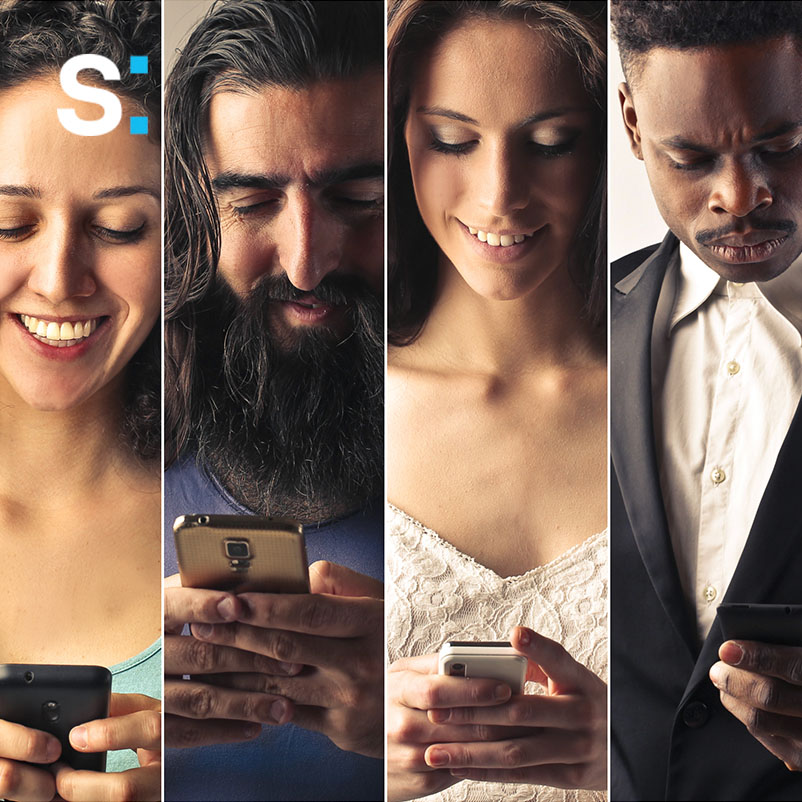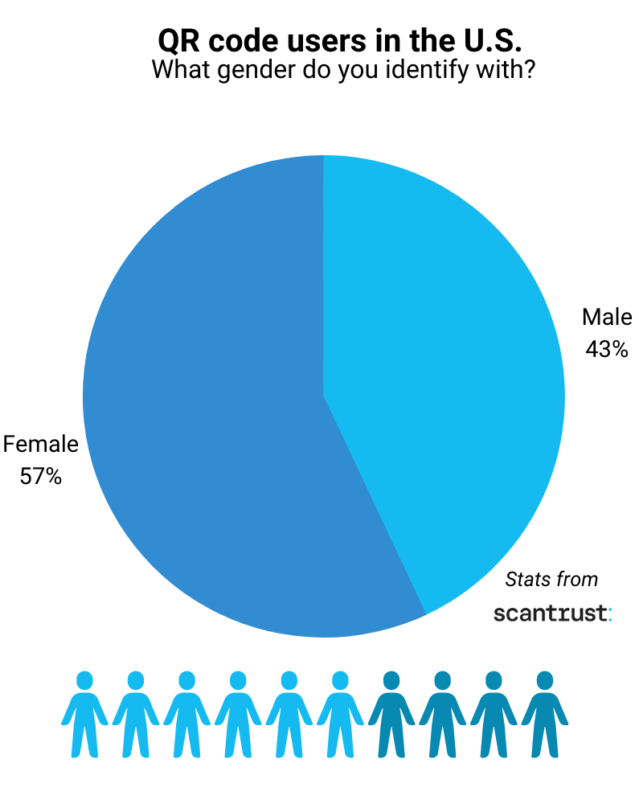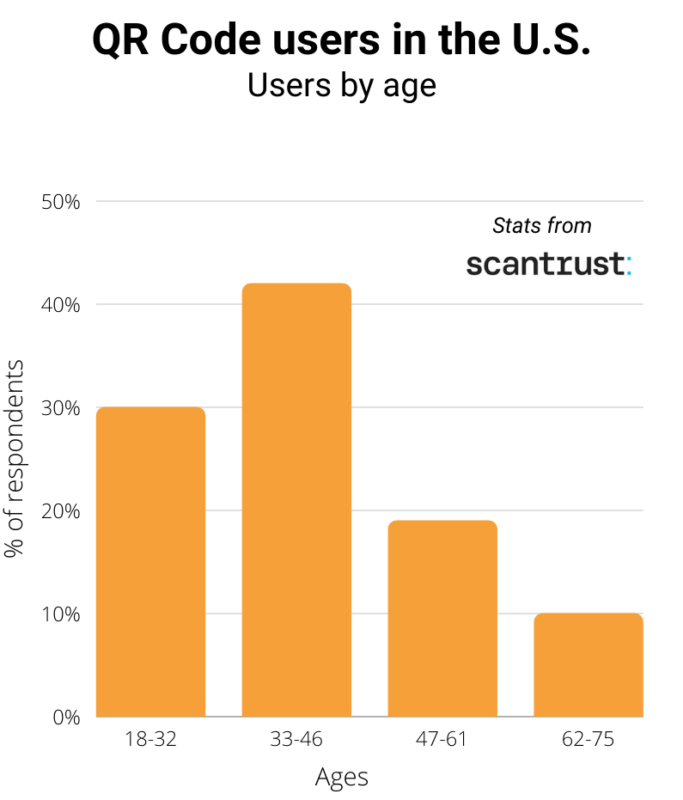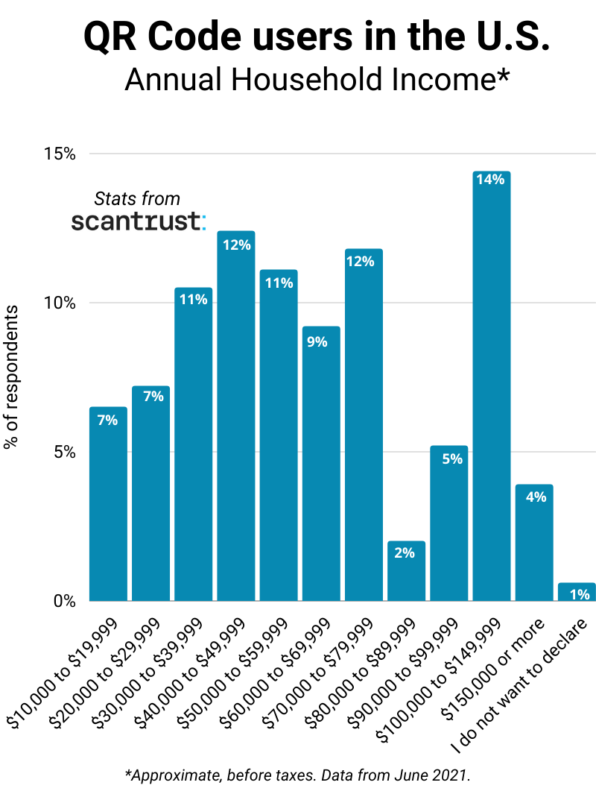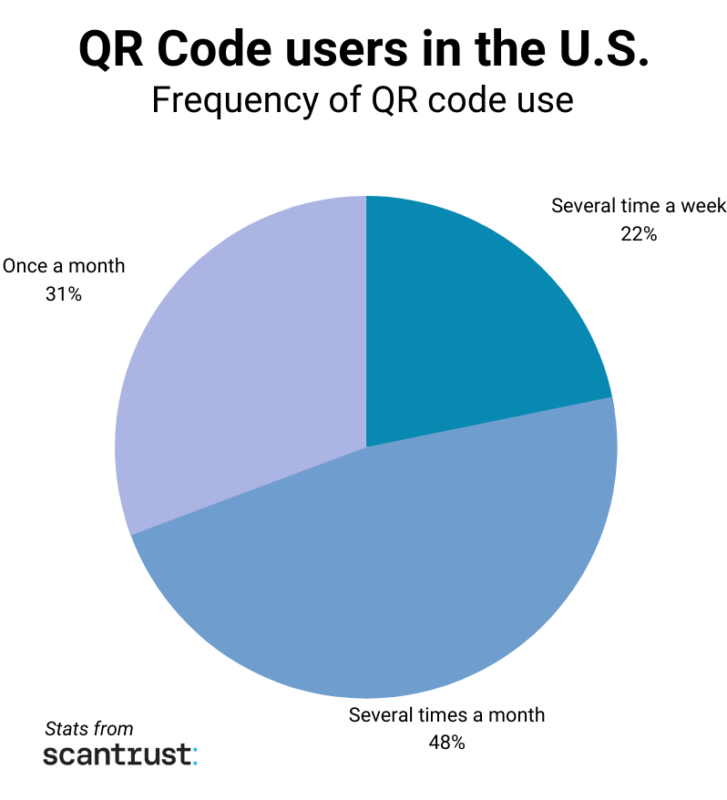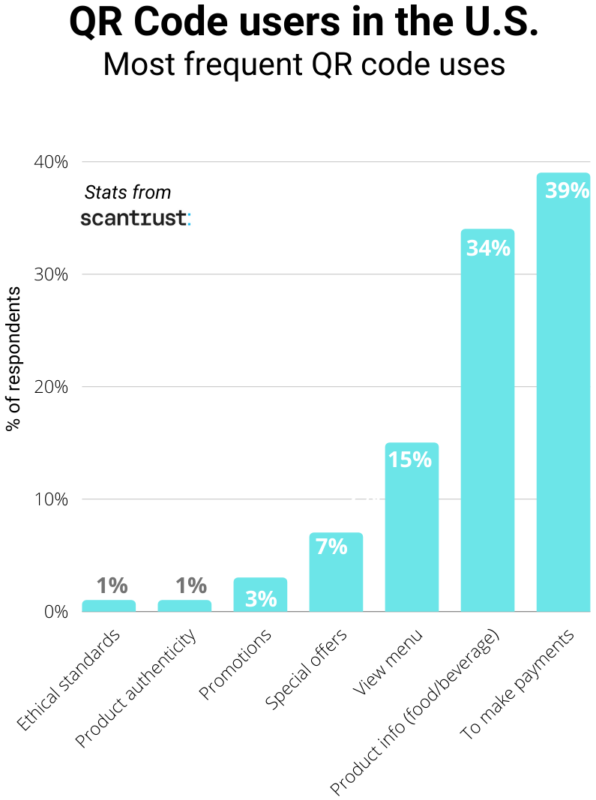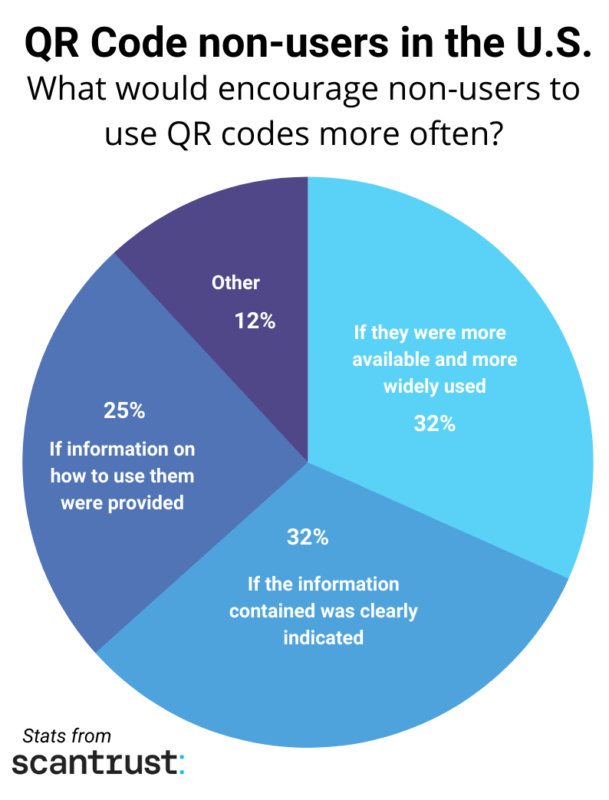To say that Coinbase’s ad during Superbowl LVI (56) created a lot of buzz would be an understatement. The color-changing, floating QR code was quite simple; but it also worked, and people scanned. The downside? It got so many scans that the Coinbase app crashed from the flood of new user traffic. Even without any teasers or explanation about what was on the other side of the code, people were curious and wanted to know more. This highlights an essential aspect of human nature that affects QR code usage — curiosity.
QR codes have been around for decades, so why are we talking about them like they’re the latest marketing craze? Because, in a way, they are. When QR codes were first released, they had potential for various consumer use. But there was one big hurdle to mass adoption— most people didn’t have an easy way to scan them. Smartphones weren’t ubiquitous yet, and people who did have one didn’t have the software to scan the codes. You had to download an app. Mobile internet was slow; landing pages were not optimized for mobile, and, in the end, it was just too much effort to scan something that didn’t really lead anywhere useful or engaging.
In short, QR codes got a reputation for bad user experience in the U.S. and Europe, and it stuck — until now.
When smartphone manufacturers added QR code scanners to the phone’s camera, marketers opened their full potential with new and creative use cases.
Today, almost everyone has a smartphone with a built-in QR code scanner. And, in most places, mobile internet is fast. Real fast. But it’s more than just convenience; QR codes now actually serve many purposes—from payment transactions to finding more information on a product, from social media and login authentication to renting e-scooters, the list of uses goes on.
Most people also know what QR codes are and how to scan them. So if you use an app like Whatsapp, you’ve had to scan one. But are people scanning QR codes other than out of necessity?
The last couple of decades has shown that consumers want to know more about their products, especially in the US and Europe. QR codes allow consumers to scan for more information about ingredients and sourcing, should they be interested in knowing more. And QR codes can also be designed to look good.
So does a colorful QR code make consumers want to scan it? Yes! Not only do we know this because of the Coinbase advertisement, but QR code scans can also offer consumers the information they crave and the transparency they demand.
How do we know? Well, we asked! In 2021, Scantrust surveyed typical consumers in the U.S. about their experience with and usage of QR codes. Here are the results.
Who did we survey about their QR code scanning habits?
- The survey was conducted online in 2021 through a leading survey data provider and included; QR code users and non-users divided by gender, annual income, and age.
- Respondents were from the US. Additionally we conducted the survey in UK, EU, and Brazil. (results to be shared in an up-coming article)
- Participants must have responded that they were at least occasional users of QR codes.
When screening, we divided users into two distinct groups — QR code users and non-users. Generally for our analysis, we define non-users as individuals who responded that they use QR codes infrequently or never. However, even among non-users, only a tiny fraction said they’re not familiar with QR codes.
Insight: Females responded in larger numbers
Among individuals surveyed in the US, the QR code user group skewed female, while male participants made up the majority of non-users. This is potentially an exciting insight considering that women drive 70-80% of consumer purchasing decisions.
Insight: Most respondents are between the ages of 18 to 46
Among our US-based participants, most QR code users were between the ages of 18 and 46, with the largest proportion being between the ages of 33 and 46. The largest group of non-QR code users was aged between 62 and 75, representing close to 40% of all non-users. Those in the 33-46 age bracket were the second-largest group of non-users.
Insight: Median annual household income of respondents is around $67,000
Respondents in both groups, QR code users and non-users, were spread out along the income distribution. However, the incomes of respondents tended to fall closer to the median US household income ($67,521) with incomes for roughly three-quarters of QR code user respondents ranging between $30,000-$80,000. Meanwhile, we found that a larger portion of non-user respondents have an annual income of $100,000 and above.
The US market has a slightly higher percentage of iPhone users versus cell phones running on the Android operating system, which runs on devices from multiple manufacturers. Meanwhile, Android users made up over half of QR code users in our survey. It’s interesting that individuals who choose to navigate a more research-intensive decision-making process for purchasing a cell phone are also more likely to utilize QR codes.
What makes a consumer want to scan a QR code?
Food packages in grocery stores and restaurant menus are now common places to find QR codes. Due to the COVID-19 pandemic, QR codes are a part of promoting public health and hygiene by reducing close contact between people. There are now more situations and use cases for QR codes.
So QR codes may seem to be everywhere, but are they being scanned? According to our survey participants — yes.
Insight: Most users scan codes several times a month
Most individuals in the QR code user group indicated that they do so several times a month, while about a fifth of respondents use QR codes on a weekly basis — indicating that they find value in scanning when QR codes are present.
Insight: Making payments and getting food information are the top two use cases
Overall, respondents like QR codes for their practical application.
Meanwhile “making payments” and “checking information on food and beverage products” are the top two uses of QR codes. We’ll likely see the use-case for checking food product labels as an even more common use in the future, not the least because of legislation such as the US National Bioengineered Food Disclosure Standard.
While we’re seeing more and more QR codes on restaurant menus, this application comes in third on the QR code usage list. Consumers are even less likely to check QR codes that only offer special offers or promotions. Respondents are clearly indicating that brands and companies who leverage QR codes to create value for consumers — whether by easing processes or offering transparency and information — are on the right track.
Insight: Incentives and what’s being offered are important to scan rate
QR code non-users said they would be more likely to scan a QR code that clearly stated what is being offered by scanning. This is relevant for any brand considering leveraging QR codes and connected packaging— offering a simple statement about what consumers gain if we scan creates trust and encourages an interaction.
Not knowing how to use QR codes is a common explanation among non-users as to why they don’t use them more often. There are simple steps that can be taken to get more scans and increase consumer engagement.
Insight: The US is distinct from other markets regarding QR code use case preferences
Top 3 use cases per country
| 1 |
To make payments
|
To make payments |
To make payments |
To make payments |
To make payments
|
| 2 |
To check information on
food and beverage products |
To view restaurant
menu |
To check information on
food and beverage products |
To check product authenticity |
To check information on
food and beverage products |
| 3 |
To view restaurant
menu |
To check information on
food and beverage products |
To view restaurant
menu |
To check information on
food and beverage products |
To check product authenticity |
So, is the purpose of the scan of a QR code important? Of course. In rankings, UK respondents scan more often for more information about a product. Meanwhile, respondents in France, Brazil, and the US rank product authentication as the more important use case. While Germans were most likely to scan for authentication only. Knowing these consumer priorities can help companies determine when and how to use, as well as, where to place their QR codes; and how to communicate with consumers about the purpose of those codes.
What should a QR code look like to get the most scans?
Indeed, there are many ways to design a QR code: black and white, with color, with or without a logo, with a number code below or without. But is the design that important? Consumers very much judge a book by its cover. And in the case of QR codes, the simpler the better, and the more trustworthy.
Insight: Seemingly small QR code design details can impact consumer’s willingness to scan in surprising ways
Type of QR code most likely to be scanned per country
| Code |
regular |
serialized |
regular |
regular |
regular |
| % of votes |
66.9% |
70.7% |
74.3% |
81.6% |
72.2%
|
An overwhelming majority of respondents in the US — as well as the UK, France, Germany, and Brazil — said they were more likely to scan a code without a number. More than half of respondents in all countries, except the UK, said they were most likely to scan a regular QR code. Meanwhile, in the UK, respondents were more likely to scan a serialized code, which is a QR code with a visible number, and to some individuals may appear more official.
Can a QR code increase trust in a product and brand?
Companies that may be considering using QR codes on products should be aware of how consumers perceive QR codes as a reflection of the brands that use them. Although there are several types of QR codes, including those that include an anti-counterfeiting component and those that don’t, simply using a QR code is associated with a product or brand that can be trusted.
Insight: QR codes make brands appear more transparent and trustworthy
Since the majority of our US-based respondents agree that a QR code makes a product’s story more transparent and trustworthy, the sentiment is clearly indicative of a larger push from consumers to be more aware of their consumption habits, the sources (and stories) of the products they choose, and the business practices of the brands they identify with.
Questions of sustainability and ethical production have been at the forefront of discussions about product manufacturing, something which is important among younger consumers. As these consumers age and claim more purchasing power, having easy-to-access information about these topics could become a factor in their purchase decisions. In fact, compared to QR code users, non-users were more likely to indicate the desire to know more about production methods related to ethical questions (e.g., labor practices).
Insight: Higher brand trust correlates to a higher willingness to spend on a product
Choosing to be transparent with consumers about product origin, sustainability, ethical production, and so on can impact the bottom line. Our survey found a positive correlation between consumers receiving more information about a product via a QR code and their willingness to pay more for that product.
Do people trust QR codes?
Insight: Over 80% of US-based QR code users said that they think QR codes are safe
20% of respondents indicated that they “didn’t know” if QR codes are safe. Consumer trust is difficult to earn. Because QR codes are a means to provide critical information to consumers, there must be trust in the codes themselves. It’s common knowledge that standard QR codes can be used in malicious ways the same way that any website URL can. This has contributed to some reluctance and trust issues surrounding the use of QR codes. Despite that, our survey indicates there is not a problematic distrust of QR codes.
Even among our respondents who fall in the non-user category, safety was not a major concern affecting usage. Their responses around wanting additional information about where a scan leads, show that instead of providing information on whether a QR code is safe, companies should focus on being clear about the result of a scan.
Having concrete data on QR code usage is very important to Scantrust. The world’s biggest brands trust us to provide QR codes that give them insights into their supply chains and customers while protecting their brand. Our survey makes it clear that QR codes are being used at rates and in ways that should assure businesses that they are making the right choice by using them in there connected packaging strategy. If you’re interested in receiving more information about QR code usage or how to use them for your business, schedule a meeting with us.
